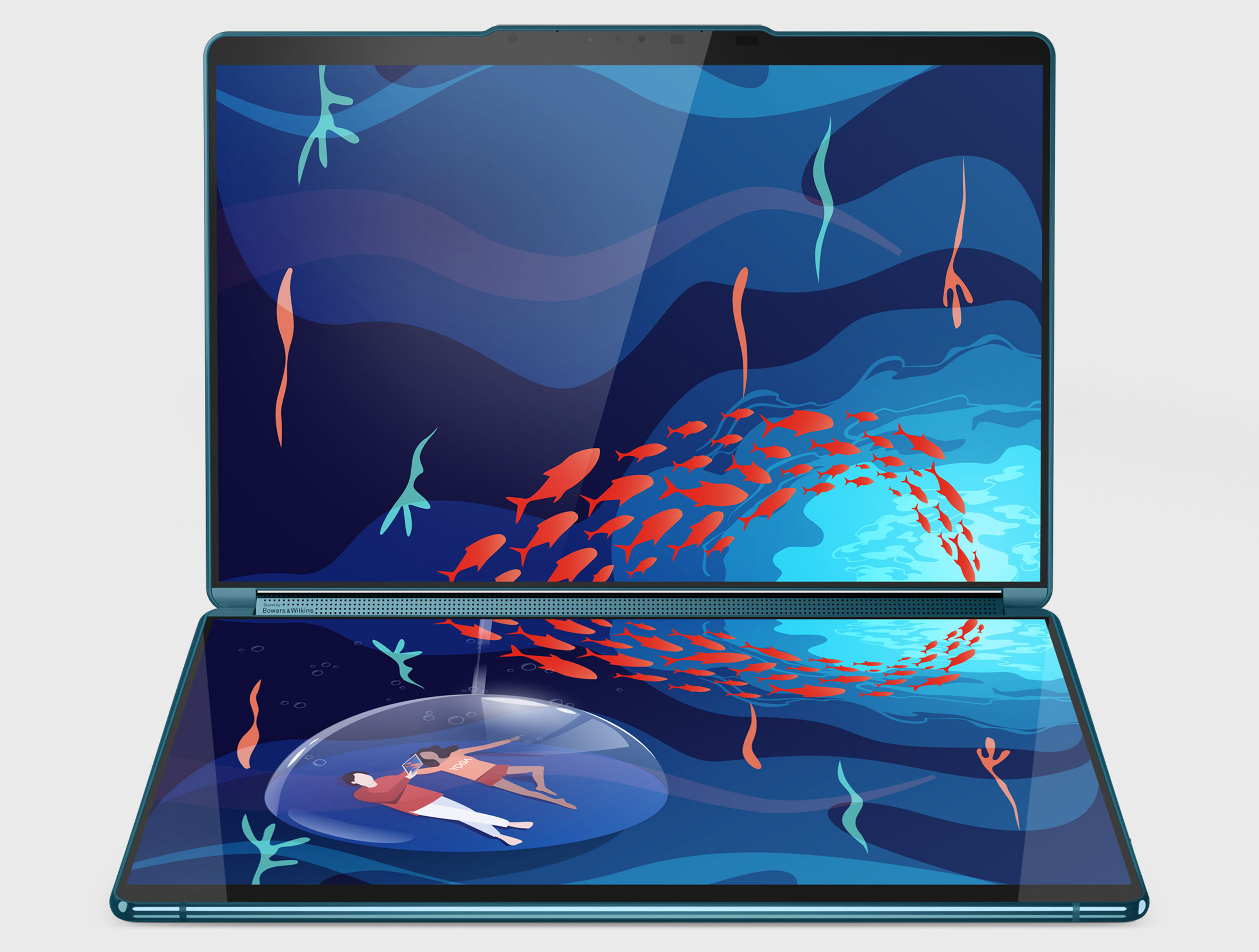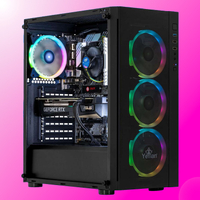This dual-OLED Lenovo could be the future of laptops
Could even portable gaming rigs go dual-screen?
Lenovo has a new dual-screen laptop out, the Lenovo Yoga Book 9i. This is no concept machine. It's not even a clunky beta-feelin' early stab that you can buy but probably shouldn't. It's a polished, slick, highly usable PC. Which begs the question, is this the future of laptops, even laptops for gaming?
Just to head the most obvious scepticism off at the pass, it really wasn't all that long ago that Blackberries with physical keyboards ruled the smartphone and the world scoffed at the idea of on-screen keyboards. Who would want type on one of those?
So, polling the plebs and finding they mostly reject the idea of an on-screen laptop keyboard doesn't mean much. They didn't think they wanted one on a phone, either, and look how that went.
Hold that thought while we cover off the Lenovo's specs. It runs dual 13.3-inch OLED panels, each with 2,880 by 1,800 pixels and capable of 400 nits. The chassis is very slick, with nearly symmetrical and super-skinny upper and lower clams, fairly slim bezels all round and a rather smartphone-esque vibe to the overall design, what with the curved and polished metal chassis edges.
Obviously both screens are capacitive touch, but the novelty beyond the simple fact of the two screens is at least in part in the bundled cover which doubles as a stand, plus a physical keyboard.
That opens up a range of options beyond the software on-screen keyboard (which also includes an on-screen trackpad). You can stick the keyboard on top of the lower screen or use the stand with the dual screens side-by-side or stack atop one another. There's a stylus, too, allowing for things like note taking on the lower panel while consuming content on the upper panel.

That aside, the internals are pretty standard PC, with an low-voltage Intel CPU and integrated graphics. It's no gaming device. That said, it's all pretty intriguing. But it all rather unavoidably come back to that input problem? Is typing on a screen really a goer?
Keep up to date with the most important stories and the best deals, as picked by the PC Gamer team.
And what about gaming? Gamers gag at short-travel chiclet-style laptop keyboards, much less on-screen keyboards with zero travel and at best some kind of haptic trickery.

It's certainly a tough ask to imagine an on-screen keyboard being much good for gaming. However, if you've ever used Apple's Force Touch track pads, you'll know how convincingly they mimic a conventional physical click. So, perhaps it can't be entirely ruled out.
Moreover, dual screens would open up a lot of possibilities for mobile gaming. Screen space is always at a premium on a laptop. So, the ability to, say, move menus, UI elements, mini maps and the rest to the secondary screen could be interesting, as could support for multitasking including streaming while in-game.
Anyway, the argument for dual-screen laptops probably isn't primarily gaming centric. But it's also hard to observe the Lenovo Yoga Book 9i and not think that there's at least a chance it's previewing the future of laptop PCs. If that does turn out to be the case, the gaming laptop will probably succumb, too.
Maybe this is all a bit fanciful and laptops aren't about to go the way of smartphones. But while you ponder that, why not check out the very best gaming laptops you can currently buy. You know, ones with actual keyboards.
Best gaming PC: The top pre-built machines.
Best gaming laptop: Great devices for mobile gaming.

Jeremy has been writing about technology and PCs since the 90nm Netburst era (Google it!) and enjoys nothing more than a serious dissertation on the finer points of monitor input lag and overshoot followed by a forensic examination of advanced lithography. Or maybe he just likes machines that go “ping!” He also has a thing for tennis and cars.



